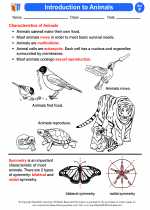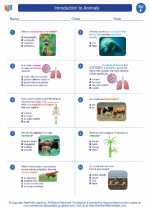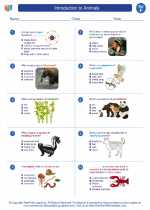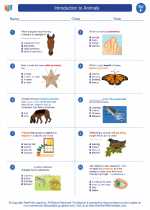Similarities
In science, the concept of similarities refers to the comparison of characteristics, properties, or behaviors of different objects, organisms, or phenomena to identify commonalities or shared features. Understanding similarities is crucial for recognizing patterns, classifying objects, and drawing conclusions in various scientific fields.
Study Guide
- Definition: What is meant by similarities in the context of science?
- Examples: Provide examples of similarities in the natural world, such as similarities between plant species, animal behaviors, or chemical elements.
- Importance: Explain the significance of recognizing similarities in scientific research and experimentation.
- Comparison: Discuss the difference between similarities and differences, and how they are both important in scientific analysis.
- Application: Describe how scientists use the concept of similarities in fields such as biology, chemistry, physics, and environmental science.
- Exercises: Create exercises or questions that require students to identify and compare similarities between different objects or organisms.
- Discussion: Initiate a class discussion on the role of similarities in the scientific method and the process of forming hypotheses.
[Similarities] Related Worksheets and Study Guides:
.◂Science Worksheets and Study Guides Sixth Grade. Introduction to Animals
Study Guide Introduction to Animals
Introduction to Animals  Activity Lesson
Activity Lesson Introduction to Animals
Introduction to Animals  Worksheet/Answer key
Worksheet/Answer key Introduction to Animals
Introduction to Animals  Worksheet/Answer key
Worksheet/Answer key Introduction to Animals
Introduction to Animals  Worksheet/Answer key
Worksheet/Answer key Introduction to Animals
Introduction to Animals  Vocabulary/Answer key
Vocabulary/Answer key Introduction to Animals
Introduction to Animals  Vocabulary/Answer key
Vocabulary/Answer key Introduction to Animals
Introduction to Animals  Vocabulary/Answer key
Vocabulary/Answer key Introduction to Animals
Introduction to Animals  Vocabulary/Answer key
Vocabulary/Answer key Introduction to Animals
Introduction to Animals 

 Activity Lesson
Activity Lesson
 Worksheet/Answer key
Worksheet/Answer key
 Worksheet/Answer key
Worksheet/Answer key
 Worksheet/Answer key
Worksheet/Answer key
 Vocabulary/Answer key
Vocabulary/Answer key
 Vocabulary/Answer key
Vocabulary/Answer key
 Vocabulary/Answer key
Vocabulary/Answer key
 Vocabulary/Answer key
Vocabulary/Answer key

The resources above cover the following skills:
LIFE SCIENCE
From Molecules to Organisms: Structures and Processes